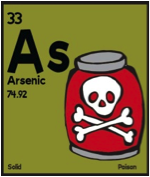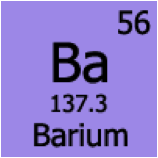“Capitalist Animal Farm: Beware, Technocrats!”
by Martha K. Huggins…….
Set-Up: Results of Interactive Journalism
This play about Stock Island’s landfill and its chemicals springs from last week’s contributions to my, “Let’s Write a Play: Scripting the Economics, Science, and Politics of Death: “Fifteen Shameful Lethal Acts,” in the Blue Paper (1/22/2016). Jerome Grapel, Alex Symington, and John Donnelly pointed out that any discussion of dangerous and polluting chemicals, and how these are handled by government, had to include: (1) The role of capitalism in the economic and political system in which pollution occurs and is hidden; (2) Caution when assigning blame to a government actor’s particular political party affiliation since one party can be as bad as the other; (3) The government’s role in enabling, enhancing, ignoring and pollution disasters.
To join these points and suggest how capitalist governments and corporations act jointly against their constituents and customers, respectively–with both Democrats and Republicans doing so—I asked the following: Have some actors who interface with governments and corporations been allowed to use their assumed ‘preeminence’ to issue pronouncements that are unquestioned and unquestionable? Enter the ‘Technocrat’ who wears the formal credentials of “scientist,” “engineer,” “city manager,” “economist,” and increasingly “risk manager.”
What are technocrats’ characteristics? They are the educated we call ‘specialists.’ We are cowed by the sophistication of their very specialized ‘knowledge,’ which is organized bureaucratically by their government and corporate employers into a researchable form that practically guarantees its being complicated and difficult to access. “Technocracy” is claimed to be “pure,” ordinarily assumed to mean that technocratic decisions are not influenced by politics or any other non-“scientific” or non-technical concerns or body of evidence. One characteristic of being a ‘Technocrat’ is that the person can work for anyone because, as their technocratic ethos goes, the technical ‘expert’ scientifically assesses and delivers ‘facts.’ For technocrats ‘facts’ become the end-in-themselves—usually to the exclusion of ‘messy’ moral and humanist issues. Consequently, as German sociologist Max Weber argued long ago, “the more an actor devotes himself to [something] for its own sake,…the less he is influenced by considerations [about] the consequences of his actions.”[i] In social psychological terms, therefore, technocrats are de-sensitized to the human consequences of their rendered “facts.”
Our model for a play about a southernmost landfill, in particular, and about chemical dumping and monitoring, in general, is an existing play that focuses on Josef Stalin’s Soviet Union. V.I. Lenin and Josef Stalin placed great reliance on the ability of technocrats to industrialize Soviet society. Benito Mussolini and Adolph Hitler did so as well; US government bureaucrats—many of them ‘technocrats’—also place a very high premium on the ‘exclusive’ value of ‘technocrats’ for solving local, state, national, and international ‘problems,’ as technically defined, of course.
George Orwell’s Animal Farm is a critique of technocracy, an observation of mine less recognized by the many who have read Orwell’s metaphorical novel. To reconcile any differences among the responses to my last week’s Blue Paper submission, I selected Orwell’s engaging Animal Farm. It provides the drama for our play, “Capitalist Animal Farm: Beware, Technocrats!”
“All Animals Are Equal but Some…More Equal Than Others”
In 1945 George Orwell’s fable, Animal Farm, was published and then banned by Josef Stalin from all areas controlled by the Soviet Union. A not-so thinly-veiled critique of repressive government, especially Stalin’s, in Orwell’s Animal Farm the powerless animals come together nightly on “Manor Farm” to discuss their lowly plight. The nascent rebellion was led initially by “‘Old Major,’ the animal farm’s “prize white boar” who raised the other animals’ consciousness about their exploitation and violent mistreatment by “The Human” farmers—also called, “Man.” In ‘Old Major’s words, “Our lives are miserable, laborious, and short. We are given just so much food as will keep the breath in our bodies….Forced to work to the last atom of our strength…we are [then] slaughtered with hideous cruelty.” The marching orders for the animals’ struggle was, “Never listen when they tell you that Man and the animals have a common interest. It is all lies. Man serves the interests of no creature except himself.”
Even as some comrades were being co-opted by the “enemy,” most of the farm’s animals continued to struggle against mistreatment and the one-sided distribution of animal-produced surplus. A central tenet, “that in fighting against Man, we must not come to resemble him,” was eventually disregarded as larger portions of the ‘more privileged’ animals began acting just like “Man”—Pigs supervising farm work “carried whips in their trotters.” Animals were executed by their own for “entering into a plot to murder Napoleon,…a large rather fierce-looking Berkshire boar.” By Animal Farm’s end, the revolutionary dream had died: Preeminent pigs are seen drinking beer with their former enemies. Mr. Pilkington, a farmer at the ‘social’ announced—with pigs lifting their beer mugs to him–that “Between pigs and human beings there was not…any clash of interests whatever….The period of misunderstanding was at an end.” Napoleon, the once respected revolutionary boar, expressed happiness that “the period of misunderstanding” had ended, “clink[ing] his mug against [farmer] Pilkington’s. …” The ‘Eminent’ Animals had been co-opted into the enemy’s system.
Performing Power and Privilege, and their Outcomes
Our play, “Capitalist Animal Farm: Technocrats, Beware!”—like Orwell’s Animal Farm– will deal with power, privilege, and their outcomes by contrasting capitalism and scientific and other forms of technocracy against civic engagement.
- The play’s central questions: Do residents and visitors to Southernmost Island know what its landfill conceals under its tattered containment grasses? Are scientific, technocratic, and government ‘experts’ honest about the landfill’s contents? Can ‘technocrats’ working for governments and public corporations ever be completely honest? Is government ‘transparency’ little more than a smokescreen for convincing curious civilians that ‘all is well’?
- Location of our play is a sub-tropical region in the southernmost United States with a landfill now in what technocrats label ‘long-term care’– is closed to dumping but still potentially dangerous enough (presumably as risk managers see it) to contaminate water, animals, marine life, and people, the only ones who might sue.
However, precisely where this landfill is located is one of the conundrums in our play: how will we set the play’s geographic location when those who could be most damaged by it cannot find the landfill on a map? Most maps of Stock Island do not even indicate that a landfill is there. The “Welcome to Stock Island” website [ii] shows a blank grey space where the landfill stands, pasted over with the letters, “Key West Naval Station.” Someone who is persistent can eventually locate the Florida Department of Environmental Protection’s (FDEP) map of ‘solid waste facilities,’[iii] which contains lightly indicated height designations of the landfill and some inspection wells. If you live on Stock Island or pass by it frequently, it seems impossible not to see the landfill’s imposing height– A “trash blogger” assessed Stock Island’s landfill to be, “three times as high as anywhere else in the Keys.”[iv] And on many days you’ll locate the landfill by the smell of its methane gas belches, declared by “experts” to be “safe.”
Yet according to most maps for the lay public, Stock Island’s landfill—a behemoth of Lower Keys’ trash, simply isn’t there. As the visiting “trash blogger” wrote, “we build a mountain of garbage but act like it doesn’t exist”[v]
Such exclusionist geography exists for the city of Rio de Janeiro. Some years ago during one of my trips to supervise field research in Brazil, one of my US students picked up a map of the City at the H. Stern Jewelry Gallery in the upscale Ipanema neighborhood. The map, likely published by Rio de Janeiro municipal government, had green over a hillside region of the city —as if to say that the area was a tropical forest, but which in fact contains the largest shanty town (favela) in the Western Hemisphere. Multiple Rio de Janeiro city governments had created and then ignored the misery there, but now act as though that region and its misery don’t exist. That is, until the city needed favela spaces for World Cup (2014) and Olympic (2016) venues and a new transportation system to shuttle sports fans between them. Since favelas and their working-class residents were considered unsafe for tourists, the residents of these areas saw their dwellings destroyed, with many getting a municipal government order to move to designated dwellings outside the city–where most worked. So much for scientifically arrived at decisions of urban ‘scientific’ planners, criminal justice ‘experts,’ and their municipal government partners, all under pressure from tourism, real estate interests, and the International Olympic Committee.
Laying Out the Play
- Actors.
- The play’s villans are “scientific technocrats” along with the government actors (often ‘technocrats” as well) who delegate almost absolute power to their technocrats. ‘Scientific Technocracy’ and its ‘super scientists’ and technical ‘experts’ will be performed by four ‘scientists’: one with the federal Center for Disease Control and Prevention (CDC), another employed by the Southernmost State’s Department of Environmental Protection, the third employed by Southernmost city’s health department, and the fourth–a ‘lesser technocrat’ and a Willie Loman-like character–is a powerless and overworked inspector of landfill soils and wells. He just “does his job, nothing more” and then stops for a beer with other nameless bar trollers whom he hopes will distract him from thinking about his work.
- Lay publics, our potential heroes, are renters, homeowners, tourists, and the homeless, among others. They feel powerless to question the ‘expert knowledge’ of ‘technocrats.’ Granted, most of these publics are not yet politically organized, but this is not the greatest hindrance to their promoting positive social change. The biggest barrier is their almost religious belief in the ‘exclusive and superior’ knowledge’ of scientists and associated technocrats—“Lay people do not have the requisite knowledge to challenge scientists’ ‘facts.’”
The play’s central character, “Martha,” a mother whose child, “Stacy,” is seriously ill–very likely from a pollutant (perfluorooctanoic acid–PFOA, the chemical substance in DuPont Chemicals C-8)— that is not yet monitored by federal or state governments, dares to challenge those whose actions and inactions have made her “Stacy” desperately ill. Will our play end with these lay publics at least discovering that they can digest and understand “expert knowledge” without consulting an “expert”?
- Settings: Our sets visualize the ways that government “transparency” can disguise government and scientific dishonesty through the appearance that government is ‘on top of ’ monitoring potentially serious chemical problems.
- A Play in Six Acts:
(Each act’s segue and scene change the audience hears segments of Pete Seeger’s protest Rap, “Garbage”)[vi][vii]
- Pre-school field trip to Southernmost’s Landfill: Teaching the ‘As,’’Bs,’ ‘Cs,’ and ‘Ds’ and having a class Picnic.
- Stacy Smith’s mother’s living room in Southernmost Four year-old Stacy tells her mother, Martha, about the pre-school’s field trip, asking if her own ‘sickness’ is from “Cccc-Em-E-Calz.” Her mother, Martha, decides to investigate the chemicals in Southernmost’s landfill.
- Waiting Room for the State’s Department of Environmental Protection. All the walls are papered with the Environmental Protection Agency’s list of chemicals in Southernmost’s landfill [viii] —a pad, pencil, magnifying glass, and ladder are provided to facilitate Martha’s obtaining data from the wall’s and ceiling’s wall coverings;
- “The Office of Citizen Information” at the Southernmost city’s County Health Department: Our heroine, Martha, was told that she could find an “expert” there who would “help her understand chemicals.” The Office of Citizen Information is piled high and deep with outdated science text books stacked floor to ceiling with no room for an “expert” or his desk;
- Dark Stage and Theater. If a chemical–even one that could be dangerous to human life–has not been rated as “dangerous” by a government, and validated as such by its and its corporate producer’s scientific experts, then it does not constitute a ‘problem’ to be monitored. For this reason, the only staging that makes sense for this scene is to turn off all theater and stage lights, leaving everyone in the dark. Martha, who is seeking information that could assist in her daughter’s treatment, now knows that her daughter Stacy’s bad luck was due to her body’s contamination by a legally non-lethal and thus unmonitored “emergent chemical.” [ix]

- Pediatrics Room at Southernmost Hospital. The room where Martha’s daughter Stacy lay dying from DuPont Chemical’s C-8 [x] contamination of Southernmost’s water system, is located in the hospital’s wing built through a “generous partnership” between the Southernmost government and DuPont Chemical. A nurse enters and asks Martha if she’d like a glass of water–Curtain falls.
I end our play’s prospectus with a preview of scenes I and II, hoping that these will stoke your interest in the play itself.
Act 1: Teaching the Alphabet, “A” to “D”:
Children from the Southernmost Horace Mann Early Learning Center sit with their teacher on the sun burnt, partially grassless mound of Southernmost’s landfill. Miss Diana, the landfill’s overseer, has been invited to teach Miss Audrey’s preschoolers the first four letters of the alphabet. Arriving prepared for her task, Miss Diana carries four large illustrated cards to help the children learn alphabet letters “A” through “D.” Miss Audrey’s presentation is sung with the preschoolers to the tune of “Do-Re-Mi” from the “Sound of Music.”
- The children’s teacher, Miss Audrey, frantically Googles each item that Miss Diana uses to illustrate each letter:
- Miss Diana, holding up the first card:
“A” is for Arsenic in the dirt below:
- Arsenic
“B” is for the Barium that lurks under foot;
- Barium
- Little Johnny blurts out, “What’s Barium?”
- Suzie pouts and screams, “I don’t like this song, it has strange words.”
- Becoming more distressed with each chemical presentation, sweat dripping visibly from her forehead, Miss Audrey studies her students’ reactions: Most seem oblivious to what they are hearing–they rustle back and forth on the landfill’s dirt but continue to mindlessly sing with Miss Diana.
Miss Diana: “C” is for the Chromium that settles below us.
- Chromium
And “D” is for the Dying Iguanas who have burrowed in the garbage mound.
- Dying Iguanas
With the picture of a dead, belly-up, Iguana the previously mostly obedient children become visibly nervous, angry, and some began to cry. Several children refused to sing along with Miss Diana:
- “I don’t like the letter ‘D’ and I’ll never use it if it means iguana’s die.”
- Little Jeremy and his ‘bestie’ Suzie get up and run down the landfill screaming, “I don’t want to learn that alphabet letter, it’s cruel to animals.”
- Two other children—seeing an iguana thrust his snout out of a landfill burrow—run over to scare the iguana off ‘trash mountain.’
Miss Diana is stunned: she doesn’t understand why the children as so upset, after all, she works at the landfill every day and never kills any iguanas:
- “the refuse company does that away from the landfill–I don’t even have to see it.”
- “Besides, landfill inspectors say that iguana burrowing loosens top soil and speeds-up erosion: Science is protecting children from possible illnesses by killing iguanas!”
Meanwhile, the children’s teacher, Miss Audrey, has lost control of her class. Shaking from what she has seen and heard, Miss Audrey calls the bus driver to come right away and take the children back to school for lunch, “no picnic at the landfill,” she tells her class. Some pout as they lumber slowly into the school bus. On the quiet ride back to school–children at the back of the bus are heard sniveling and whimpering. Miss Audrey frets over how she will explain to her superiors what happened at the landfill? She shivers at the thought that the children might have gotten contaminated by landfill chemicals. What if the kids tell their parents about the field trip and their parents launch a protest against her: could she lose her job? But Miss Audrey had exercised some due diligence beforehand.
Act 2: Researching Southernmost’ Landfill: Now You See It, Now You Don’t
As Miss Audrey sits down at her computer she asks herself, if her county government has the chutzpah to ‘disappear’ a 66 foot landfill from tourists, real estate prospectors, Island dwellers, and development ‘experts’, what might they have done with information about Southernmost City’s landfill contents? The answer she found was that information exists in lots of different places, and that’s the rub: You need to consult the official city and county government websites and state government’s general website and the Department of Environmental Protection’s website. Then you’ll need to cross-check between these four sites to flesh out the information from each source against the other three.[xi]You’ll still be in the dark if you never studied chemistry or cannot remember what you learned.
Common citizens, even educated ones, have become subservient to “experts,” but you can be confident that governments are not totally subservient to anyone—except maybe their risk-managers. Miss Audrey decided this after discovering the Department of Environmental Protection warning that it, offers, “No guarantee as to the accuracy of the information in this [chemical] database…. Manpower and resources are not always available to ensure [that] updates of this information to the database are made in a timely manner.”[xii] (Italics added). Hail to the risk-manager technocrats!
The curtain falls.
~~~~~~~~~~~~~~~~~
[i] Max Weber, 1978. Economy and Society I, G. Roth and C. Wittich, Eds. U of California Press, p. 26
[ii] http://www.stockislandflorida.net/Welcome.html
[iii] https://fldeploc.dep.state.fl.us/www_wacs/Reports/SW_Facility_Testsite_Results_Date_res.asp?
[v] http://thetrashblog.com/2013/08/12/the-outdated-topography-of-margaritaville/
[vii] https://www.youtube.com/watch?v=0ZesRAo5PBg
[x] See Huggins, Let’s Write a Play / Scripting the Economics, Science, and Politics of Death / Fifteen Shameful Lethal Acts the Blue Paper (1/22/2016), and see also, Nathaniel Rich, “The Lawyer who Became DuPont’s Worst Nightmare” (1/17/2016)
[xi] To identify the chemicals and their levels at the Stock Island landfill you’ll need to go to the Florida State Department of Environmental Protection’s report on the “Solid Waste Facility Test Results”[x] for Stock Island (2003-2015)—that the results are not listed in chronological order will complicate your investigation. Then you’ll need to guess that if the words, “not detected,” with respect to a particular chemical, indicate that this pollutant was not present in dangerous quantities (in someone’s estimation according to some unstated standard). You’ll also have to assume that if nothing is written in the box labeled “Description”—where the words “not detected” occur–that the named pollutant was present at some undesirable level, without knowing what this means for human, land animal, environmental, and marine well-being in the short- and long-runs. I hate to assume when mine and others’ health may be at risk that I know what is going on with landfill tests.







Martha,
Magnificent;; describes your extraordinary talent as a ‘creative master’ of ideas and the written word.
The stimulating thought process and skill set, required to communicate these intricate details and relationships in an interesting and exciting manner, are nothing short of brilliant and breathtaking. An outstanding work of art.
Your work is important and valuable. Thanks for your many distinguished contributions.
I want to draw upon your essay, along with this edition’s published articles by Mr. Knapp and myself; including the previous valued perspectives and insights of our regular contributors and commentators;; and formulate a ‘solutions oriented mosaic’ portraying avenues of discussion, which hold promise and hope for ‘realizing & actualizing’ a new reality…
If possible and as you may desire, please share your experiences, guidance and direction; as your assistance will be sincerely appreciated. Thank you.
Blessings & Respect To All..
Martha, Wow, a monumental piece of journalism (is it journalism? I’m not sure, but whatever it is, it is spectacular). When it comes to ambiguous, unobjective, results oriented technocrat gibberish, nothing competes with the “science” of economics. Economists speak a language almost none of us can understand, and yet, we have to rely on them to decide how we should develop and distribute the world’s resources, as if only they have these answers. Almost all our economists are trained to support our current form of capitalism, and being that we don’t know what they are talking about, we are almost forced to follow them. Thanks Martha, great stuff, Jerome
Monumental piece! My head is spinning…What a fun and imaginative process of education through “theater”. I find it interesting that with both Communist Stalinist Totalitarianism and Unregulated Hyper-Capitalism the “little people” (people with no power or influence $$$$) wind up in the same jack-pot of exploitation and disposability.
Even though Orwell wrote Animal Farm as an indictment of Stalinist Russia it could just as easily apply to the one percent lobbyist controlled system we live under. We don’t have Siberia, but we have for-profit incarceration and the highest per capita prison population than any other country on Earth.
The final straw will be the TPP where corporate private business interests will over rule sovereign nations laws, including environmental protection against toxic poisons in our waters. We see this criminal behavior already and with more and more frequency,,,Flint is just the latest… Russian pigs or US pigs makes no difference. A greedy pig is a greedy pig.
Alex, Great comment. For all those who think we have freedom of press and so on, I’d like to say that our mainstream sources of information, that is, the place where the vast majority of our people get their view of the world, is hardly different than what Pravda and such were in the Soviet Union (or really, any other form of so called totalitarian country). There is a framework of acceptable thinking that Big Media never goes out of and, instead of the state controlling it, it maintains its power thru its financial grip on things. It might be slightly more flexible … but not much. ciao, Jerome
I think it’s call Capitalist Totalitarianism….Have a nice day, support the troops and don’t forget to take your Soma….
It is my head that is spinning from your designation of my piece: “monumental; my head is spinning,” well, my friend, it is my head that spins. I love the idea of “unregulated hyper capitalism,” which is indeed capitalist totalitarianism. Would ‘capitalist authoritarianism’ do? What do you recommend among the two and why? This is a real question. I am encouraged by your agreement that Animal Farm is as good a model for capitalism as for Stalin’s Soviet system, thx. NOW WHEN WILL I SEE MORE OF YOUR ANALYSES IN THE BLUE PAPER. Thanks so much, Martha
Jerome & Alex,
Brilliant comments…The integrity & depth of your experience brings much needed wisdom & clarity.
The ‘science of economics’ from my perspective, means the purchasing of data and results to legitimize one’s pursuit of Money, power and control.
The lessons stemming from ‘Theater’ provides an individual with the means to look at themselves in a way, otherwise, they’d never consider. Painful acknowledgements bring growth and development to those ready to receive it.
I’m a little worried about myself; I’m starting to see some of my ideas & thoughts reflected in your comments. What will the NRA say?
Great work my Brothers…
Love, Blessings & Respect
John, Your definition of “economics” is right on. I’ll have to post an essay or 2 someday on this subject. I think economists can be useful, but we are putting the cart before the horse when we use them. Instead of them telling us how the economy works, we should be telling them what kind of society we want, and then they should construct the economic system that makes it work. Right now, they tell us what kind of economic system to have, and our society has to conform to it. Ass backwards. ciao, Jerome
For the musical:
http://youtu.be/0ZesRAo5PBg
Nice to hear from you KWshoes, I need to get a citation for you into the “play,” now that Seeger’s “Garbage” has been placed in the play. Will contact Naja. What do you REALLY think of the play, will you send me comments @mhuggins12305@yahoo.com. I suspect that you have vast experience in the theatre? I want to complete it and use it to raise money for the Blue Paper. Best, Martha
Brechtian approach. How in the hell to monitor our gov’t and get the voting populace to give a damn?
Completely agree in the fallacy of trusting the techno-“experts.”
Thank you, Rick, wow my head is sinning at having my piece called “Brechtian.” Thanks, Martha
Kwshoes & Rick,
Love the Man & Song…Thanks Much…
Is that why the Monroe County School District will not take my $10,000 in perpetuity? They do not want to raise the consciousness and increase the awareness of our youth & society, to the garbage they’re being fed…
To Rick’s point, ‘Meditation is the Key’…It flips the script. No longer will the ‘lowest common denominators’ in life be accepted as normative behavior….
Blessings & Respect To All…
John, may I address all of your insights here, rather than after each one of them? Your assessment of my article is over-the-top kind and complimentary, especially as a insight from an excellent writer. I hope that you and your colleagues will feel at Liberty to cite as you wish from my work, borrow if you wish although keep your own fine voices in the process. As for the NRA I have not seen so far that any within the organization’s head has the writing and analytical capacity that you have (or that I have for that matter). People who cannot have their ideas subjected to questions and script-flipping are technocrats, not intellectuals–you fall into the latter category. Brest, Martha
Jerome, thanks so much. I am overwhelmed by your statements about my piece and appreciate them so much. I have taken to heart that “economics” needs to be on my list: capitalist economics are technical hacks promoting capitalism, no better perhaps that the Communist Party hacks that promoted their party’s line. US economics teaching is prescriptive: this is the way it is and should be–what kind of way is that to promote learning???? And by the way, I am not sure how to categorize my piece–maybe that is a good thing?? Best martha
Did you know that the founder of Technocracy, Inc., Howard Scott, actually had no form of higher education whatsoever? Just another charlatan.
Hi Sister, yes I did and yes about education. However it is we who allow experts to be God that awards them their power. We who are not educated in their ‘expert’ science can still educate ourselves enough to hold them accountable. Thanks Martha